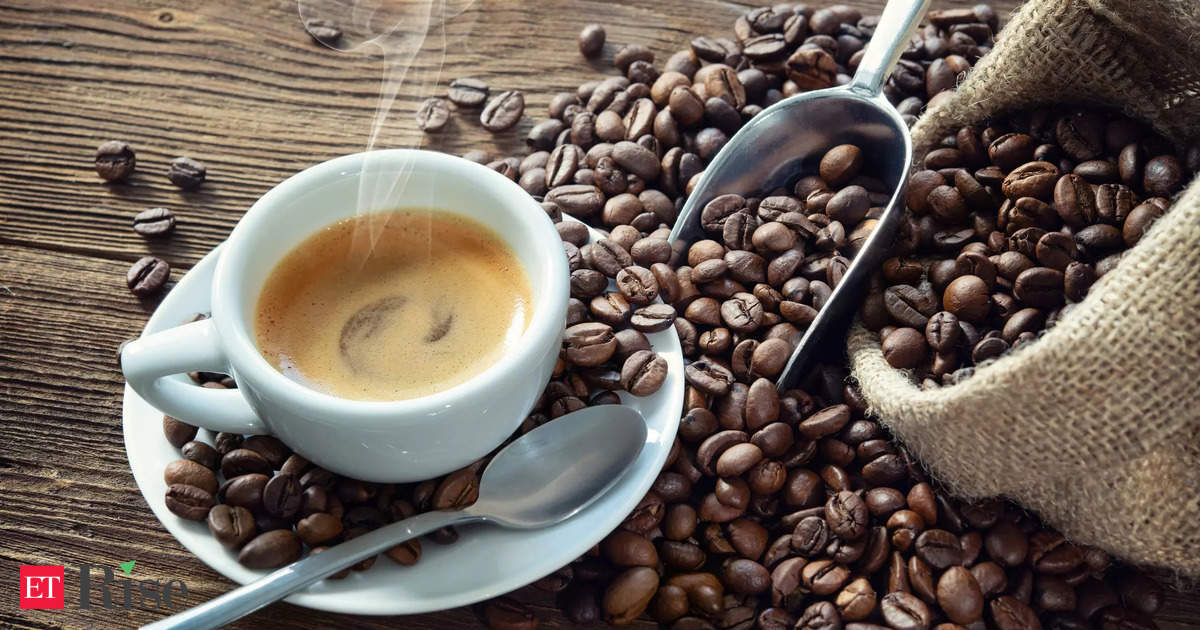Consumers are enjoying instant and on-the-go beverages more than ever, and global instant coffee consumption is on track to hit a record this year. That’s supporting demand for robusta beanseven after droughts hitting growers in top producer Vietnam sent prices soaring to their highest since the 1970s. A surge in robusta has sent futures up more than 65% this year to a high of $4,728 a tonne on Friday.
The convenience of instant coffee won over consumers during pandemic lockdowns, leading to a surge in demand. While growth slowed as people began returning to offices and coffee shops, “the audience that was won over stayed there,” said Aguinaldo Lima, director of Brazil’s soluble coffee industry group Abics.
That has led to a greater reliance on robusta, which offers better caffeine extraction for beverages, he said. Judy Ganespresident of commodities analytics firm J. Ganes Consulting LLC. Even a large supply of Arabica Robusta coffee beans, long considered a higher-quality coffee, and record shipments of robusta from Brazil were not enough to offset the imbalance created by ongoing droughts in Vietnam, the world’s largest producer of robusta.
“That’s where the market is stagnating,” Ganes said.
Increased demand for (and costs for) robusta is a big change for an industry that until recently considered the variety less desirable. Many roasters also blend robusta and arabica beans, as the robusta bean helps give the coffee a fuller body but is associated with a bitter taste. Adjusting the ratio of the two varieties helps control costs when disruptions affect parts of the supply chain.
Rising living costs around the world have also encouraged a shift toward cheaper coffee blends, while a growing consumer base in China is driving higher imports of instant and general coffee. Other products with a high robusta content are also on the rise. Ready-to-drink canned or bottled coffee in the United States was worth $4 billion last year, according to data presented by Keurig Dr Pepper Inc. during an international seminar in May. The market has grown an average of 5% annually over the three years ending in 2023, according to the same data.
 Bloomberg
BloombergAn increase in demand for robusta would normally prompt roasters to seek cheaper alternatives within the arabica market. While arabica coffee is considered high quality, not all beans are created equal. In the physical market, beans that are smaller in size and have more imperfections can cost less than futures prices. It is these cheaper arabica types that roasters often take advantage of to replace robusta. The industry has begun to shift back to lower grades of arabica, as the premium the bean commands over robusta is near the lowest level in data going back to 2019. But “the decline we are seeing is quite small compared to the price increase,” said Andre Acosta, director of commodities for Marex Solutions for Latin America, referring to the slight drop in demand for robusta.
Volcafe Ltd., one of the world’s largest coffee traders, said earlier this year that demand for robusta would have to fall further to ease supply shortages and forecast a fourth year of shortages in the season that begins in October.
Coffee makers risk being “caught” between high input costs and retailers’ reluctance to raise prices for fear of hitting sales, said Bruno Giestas, commercial director of Brazilian roaster Realcafé.
J.M. Smucker Co., whose brands include Folgers and Café Bustelo, already raised prices on a portion of its coffee portfolio earlier this year. Nestlé SA, which owns the Nescafé instant coffee brand, is facing “input cost pressure for both coffee and cocoa” that will hurt margins in the second half of the year, Chief Financial Officer Anna Manz said on a July 25 conference call.
“I think it is a bit difficult for the price to move much lower than the current levels,” he said. Hedgepoint Global Markets analyst Laleska Moda.
In some cases, higher-quality robusta has even outpaced arabica prices. Nguyen Coffee Supply in New York City, for example, sources robusta from Vietnam, which is higher in quality and price than the robusta beans that back futures contracts. That coffee has cost more each year since the company was founded in 2018 as farmers apply more labor-intensive processes, and the roaster is paying more for robusta this year than for arabica for the first time, founder Sahra Nguyen said.
Some companies are working to improve the quality and flavor of robusta coffee through growing and harvesting practices such as hand-picking coffee cherries only at their peak of ripeness. These investments in Vietnamese robusta coffee could make the variety not just a profitable component of coffee blends, but a “really amazing” alternative to the highest-quality arabica beans, said Debbie Mullin, founder of Copper Cow Coffee.
This is especially because robusta is likely to continue to gain market share because the variety is more tolerant of heat and disease than arabica, although both beans still face significant climate risks.
“I’ve always thought there was a place for high-end Robusta, and it’s exciting to see that both consumers and producers are seeing the opportunity as well,” Mullin said. “Arabica is becoming more difficult to grow.”
Disclaimer:
The information contained in this post is for general information purposes only. We make no representations or warranties of any kind, express or implied, about the completeness, accuracy, reliability, suitability or availability with respect to the website or the information, products, services, or related graphics contained on the post for any purpose.
We respect the intellectual property rights of content creators. If you are the owner of any material featured on our website and have concerns about its use, please contact us. We are committed to addressing any copyright issues promptly and will remove any material within 2 days of receiving a request from the rightful owner.

